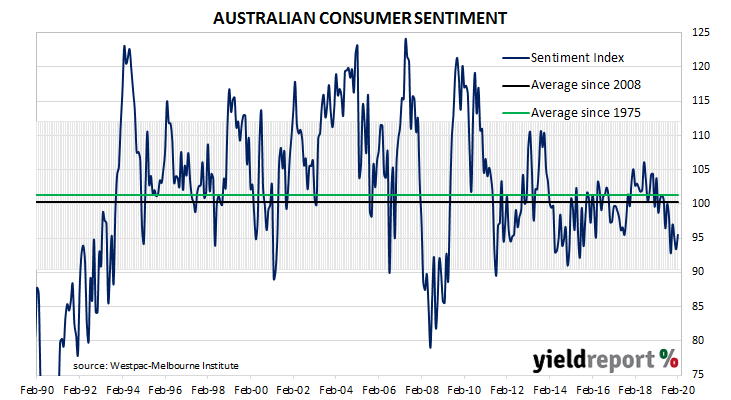After a lengthy divergence between measures of consumer sentiment and business confidence in Australia which began in 2014, confidence readings of the two sectors converged again around July 2018. Since then, their readings have deteriorated, with consumer confidence leading the way. Recent surveys paint a picture of a cautious consumer, indeed a somewhat pessimistic one. However, these readings have remained above the low-point reached in October 2019.
According to the latest Westpac-Melbourne Institute survey conducted in the first week of February, average household optimism has increased, albeit from low levels. The Consumer Sentiment Index increased from 93.4 to 95.5, back to where it was before a series of bushfires hit south-eastern Australia around the end of 2019.

Any reading below 100 indicates the number of consumers who are pessimistic is greater than the number of consumers who are optimistic. The latest figure is also noticeably below the long-term average reading of just over 101.
Westpac senior economist Matthew Hassan said, “The lift in sentiment this month likely reflects easing concerns around bushfires and comes despite some significant negative developments, most notably the coronavirus outbreak abroad.” However, he also noted “the escalating coronavirus outbreak looks to have had only a limited effect on consumer sentiment… the full impact of the outbreak is yet to be felt locally and we may see more of a drag on sentiment in the months ahead, particularly as the hit to sectors such as tourism and education start to come through.”

